Actually, this particular colony must have moved in several seasons ago, as it turned out to be huge. In the photo above, it extended more than five feet from the end of the cornice that abuts the brick wall to the left over Kuhn's office window.
Since this is UVA, we had access to some high-tech tools, including a thermographic camera. However, since most of the bees are in the broodnest, that's where the heat is generated. The honey combs that extend back from the broodnest are not much above ambient temperature, so the infra red images only hinted at the size of this hive. Notice the end of the dark blue component of the color streak showing the colony. That's actually where the last combs ended up being.
The first step was to get some advice as this was my first cut out and the location was tricky, being 80 feet up off the ground. Brian Gallagher, president of the Central Virginia Beekeepers Association, was very generous explaining all the details of such an operation. You need a lot: a bee vacuum for pulling bees off of combs, 20 or so five gallon buckets for holding all the honey comb, wooden frames pre-strung with twine to place brood combs into, and a variety of tools.
It's a two-man job. One person vacuums bees off of a comb, cuts it out with a knife, then turns to allow the second person to vacuum bees off of the other side. Then it gets dumped into a bucket (honey) or trimmed to fit a Langstroth frame and strung into place (brood). Essentially, the entire hive is transported away in three separate parts: bees, honey, and brood combs. Then you put it back together at home and have an instant full-strength hive.
UVA rented a hydraulic lift to get us up there. Chris Herndon, one of UVA's carpenters, went up with me first to open up the cornice. We first drilled a series of holes to see how far back the hive went We were amazed how far back we had to go before no more bees would exit the holes. We confirmed with a bore scope and then sawed open the cornice with a recip saw. Here's what we saw:
Next, Chris sent Rowan and me up in the basket to start the extraction. We started in the back and spent over two hours going through the honey, comb by comb.
Then Rowan was relieved by Jonathan, and we spent another two hours cutting out the brood nest and finishing up. We even spotted the queen and caught her in a queen clip. She spent the rest of the time in Jonathan's pocket.
In the end, we took about 4 lbs of bees, a large broodnest, and 145 lbs of honey comb out of the building. The colony is now working for me in my bee yard. They've already filled more than a medium super with honey comb (40 lbs of honey).
Here's the sampling of fresh honey comb we put out in the Mathematics lobby. Everyone seemed to appreciate the hard work of their former office mates!

 This is Chris after he got stung in the head down on the ground by an exasperated bee, and decided to put his veil back on. A few more photos are here.
This is Chris after he got stung in the head down on the ground by an exasperated bee, and decided to put his veil back on. A few more photos are here.























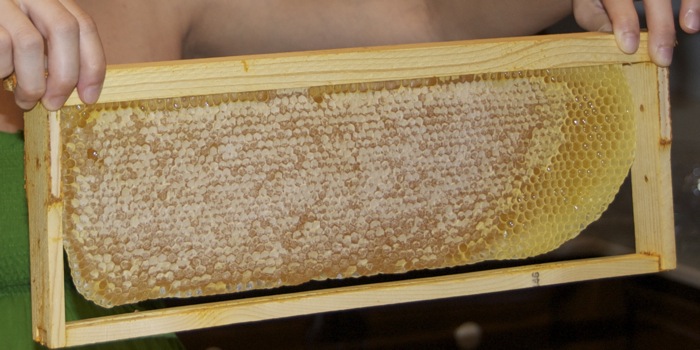



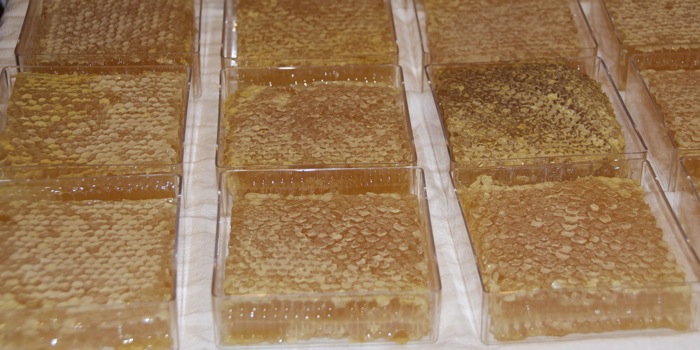

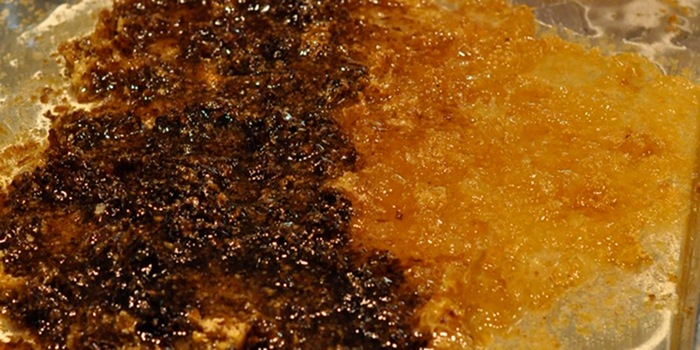

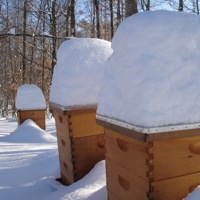 Honeybees survive by acquisition, defense, and efficient
allocation of various resources, to enable successful
overwintering and reproduction. This requires
sophisticated decision making, akin to that needed by
manufacturing firms, and beyond the capability of a single bee's
brain. But when each bee follows simple
sets of rules, the aggregate effect creates an emergent
intelligence for the colony as a whole, able to react to a
dynamic environment and achieve complex optimizations.
Honeybees survive by acquisition, defense, and efficient
allocation of various resources, to enable successful
overwintering and reproduction. This requires
sophisticated decision making, akin to that needed by
manufacturing firms, and beyond the capability of a single bee's
brain. But when each bee follows simple
sets of rules, the aggregate effect creates an emergent
intelligence for the colony as a whole, able to react to a
dynamic environment and achieve complex optimizations.
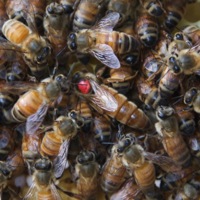 We're interested in understanding some of the
mathematical principles underlying the colony
intelligence of honeybees. We meet roughly every other
week from October through April to discuss articles
from the scientific literature on honeybees. We also
do some mathematical modeling of specific honeybee
optimization behaviors. Along the way, we learn some
aspects of honeybee biology and ecology, as well as
the history and practice of beekeeping.
We're interested in understanding some of the
mathematical principles underlying the colony
intelligence of honeybees. We meet roughly every other
week from October through April to discuss articles
from the scientific literature on honeybees. We also
do some mathematical modeling of specific honeybee
optimization behaviors. Along the way, we learn some
aspects of honeybee biology and ecology, as well as
the history and practice of beekeeping.
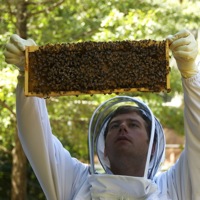 We're also interested in getting to know each other,
and getting to know the bees. In the Fall and Spring, we
meet regularly at Professor Gromoll's home for
hands-on activities in the apiary. This includes an
opening breakfast in the Fall, and a dinner in the
Spring. We'll also start a new honeybee colony for the
group, and take a field trip to a larger apiary in the
area.
We're also interested in getting to know each other,
and getting to know the bees. In the Fall and Spring, we
meet regularly at Professor Gromoll's home for
hands-on activities in the apiary. This includes an
opening breakfast in the Fall, and a dinner in the
Spring. We'll also start a new honeybee colony for the
group, and take a field trip to a larger apiary in the
area.











Amazing -- great story!
ReplyDelete